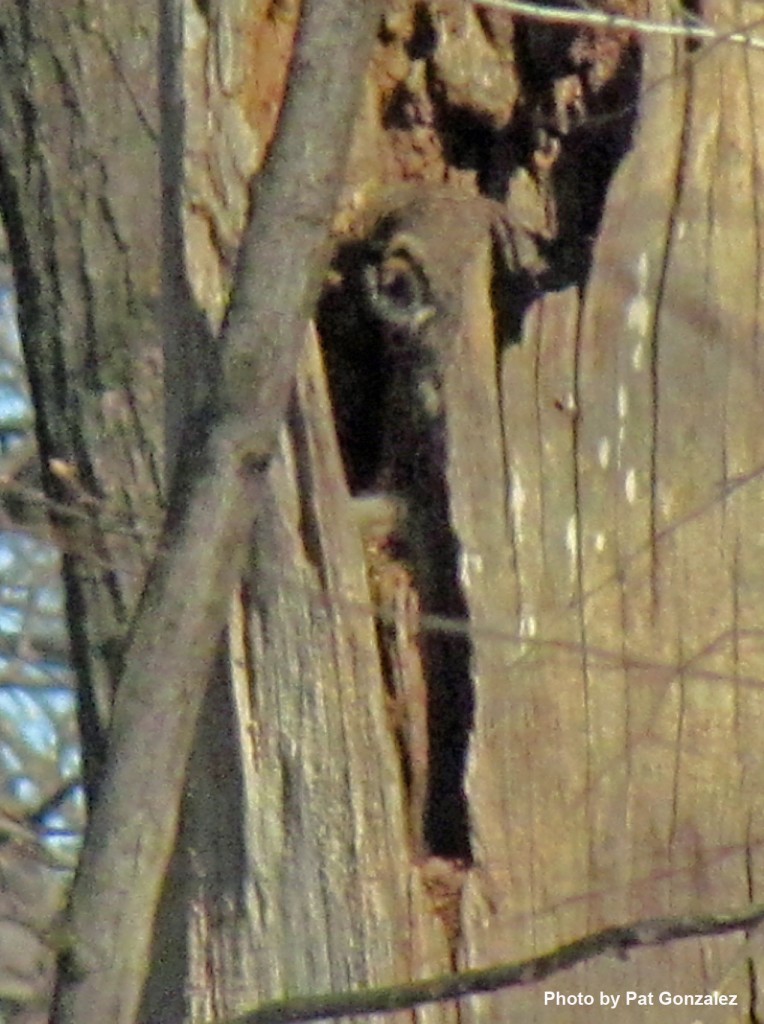Morning Eye Candy: Iconic
Posted in Photography on April 21 2011, by Ann Rafalko
Can you think of a more iconic image of The New York Botanical Garden in spring than this one?
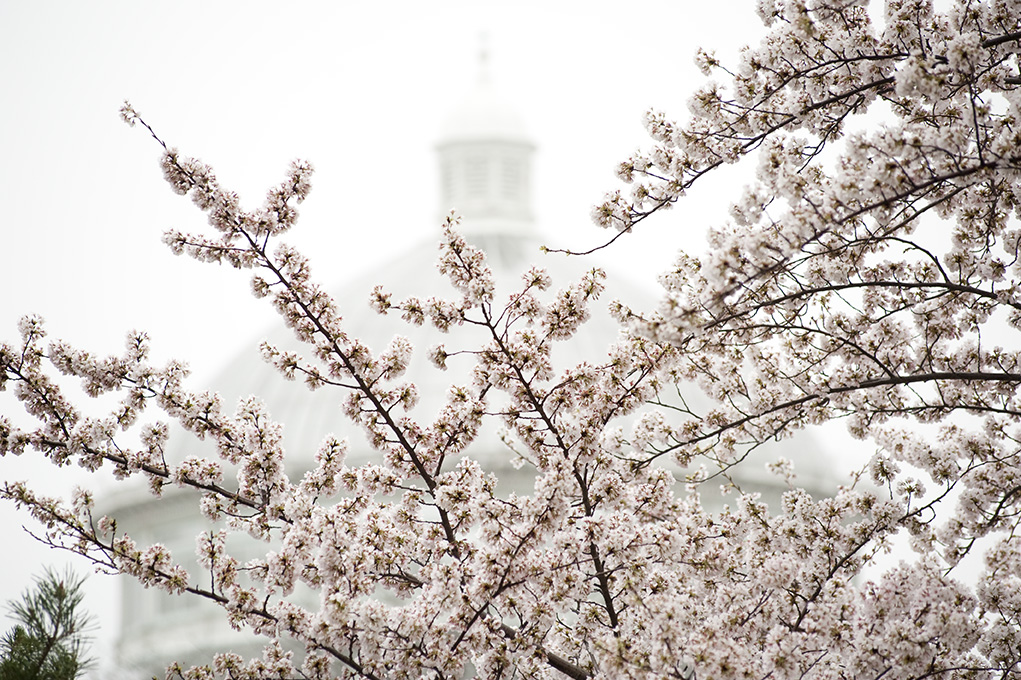
The Enid A. Haupt Conservatory (photo by Ivo M. Vermeulen)

Inside The New York Botanical Garden
Posted in Photography on April 21 2011, by Ann Rafalko
Can you think of a more iconic image of The New York Botanical Garden in spring than this one?

The Enid A. Haupt Conservatory (photo by Ivo M. Vermeulen)
Posted in Around the Garden, Photography on April 18 2011, by Ann Rafalko
Things are moving fast here at the Garden; each day brings word of another extraordinarily beautiful plant that has burst into bloom. So, while we’re closed today (but we’ll be open next Monday, April 25), we thought we would share with you some of the amazing flowering trees that are in bloom around our 250-acres. Of course, just as plants burst into flower, they also stop flowering, too, so we cannot guarantee that all of these will still be in bloom when you visit. So, be sure to follow us on Twitter or “like” us on Facebook and get up to the minute updates on what’s beautiful now at the Garden (keeping an eye on the NYBG Blog, Plant Talk can’t hurt either). And if you’ve got a question about whether a specific plant is in bloom, feel free to ask us! We’ll dispatch a plant-porter out into the Garden and get back to you.
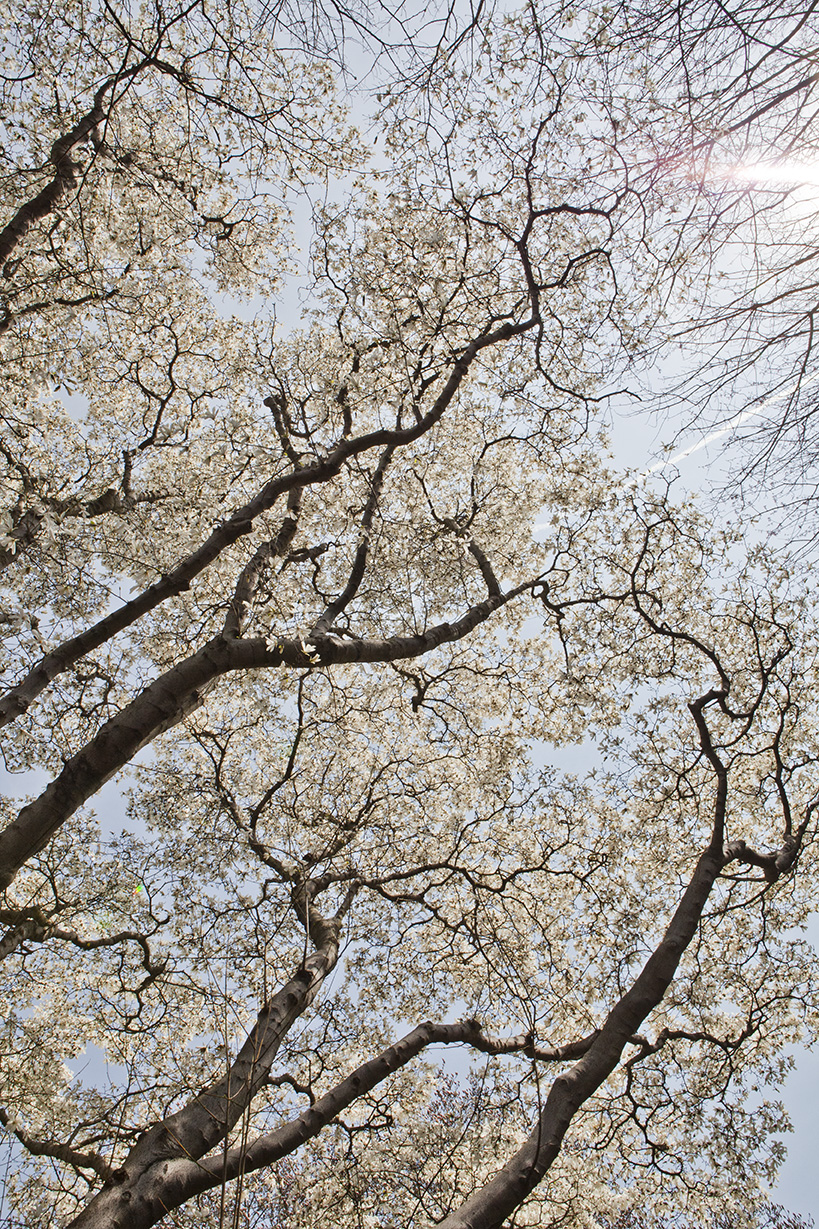
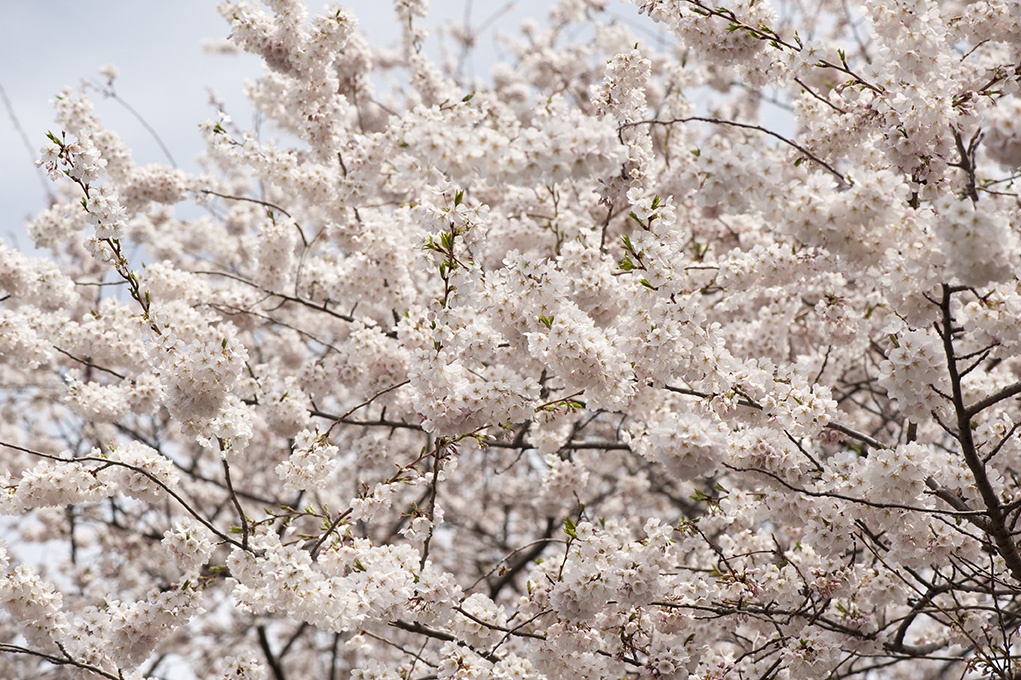
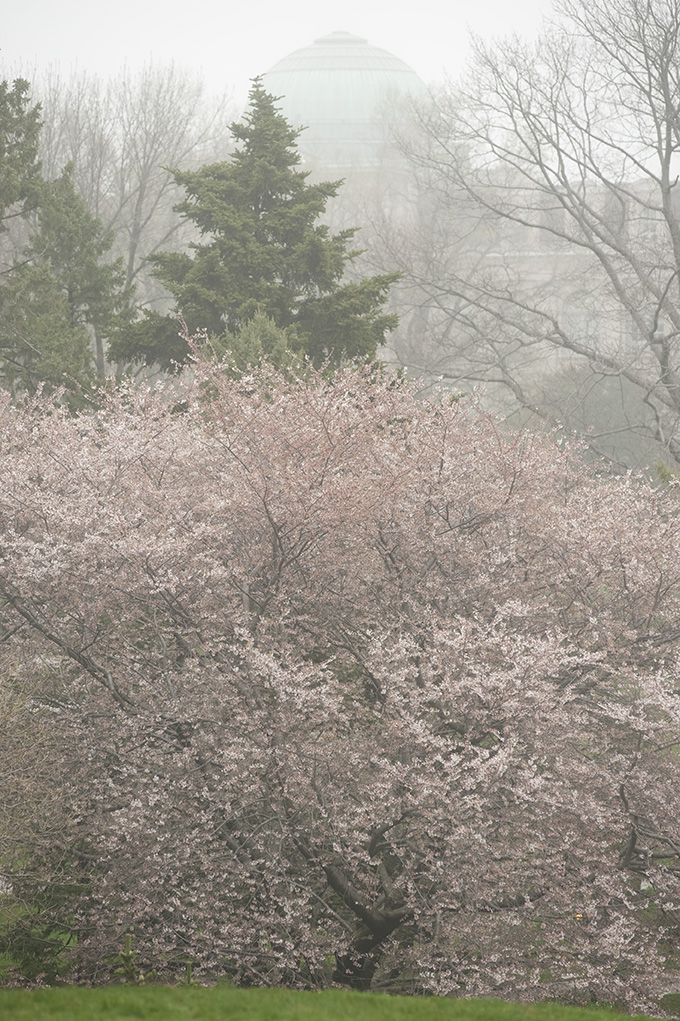
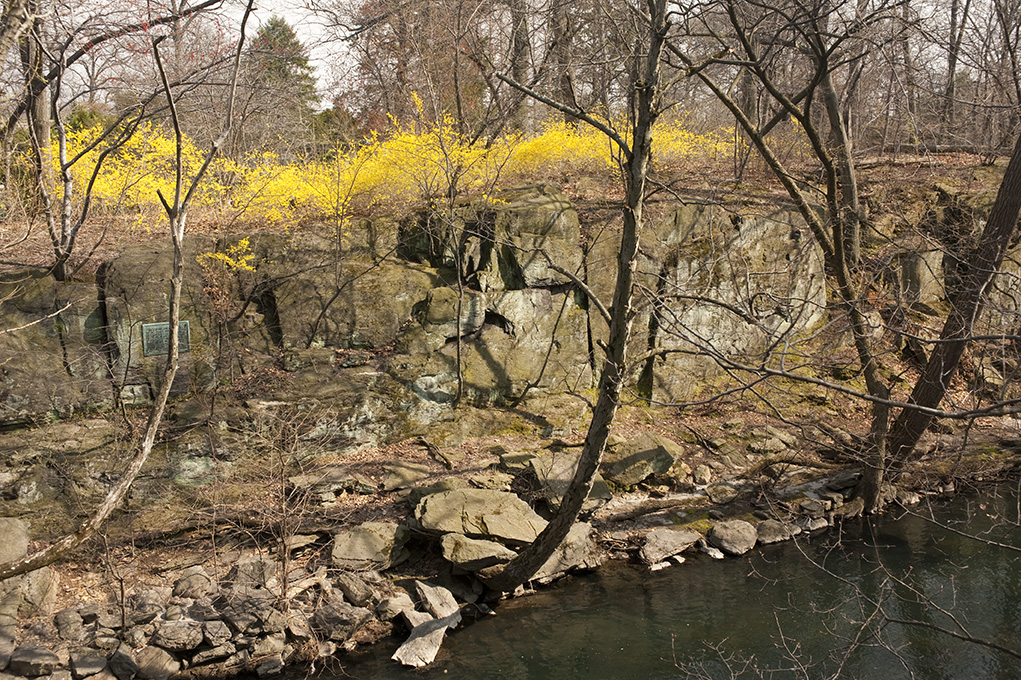
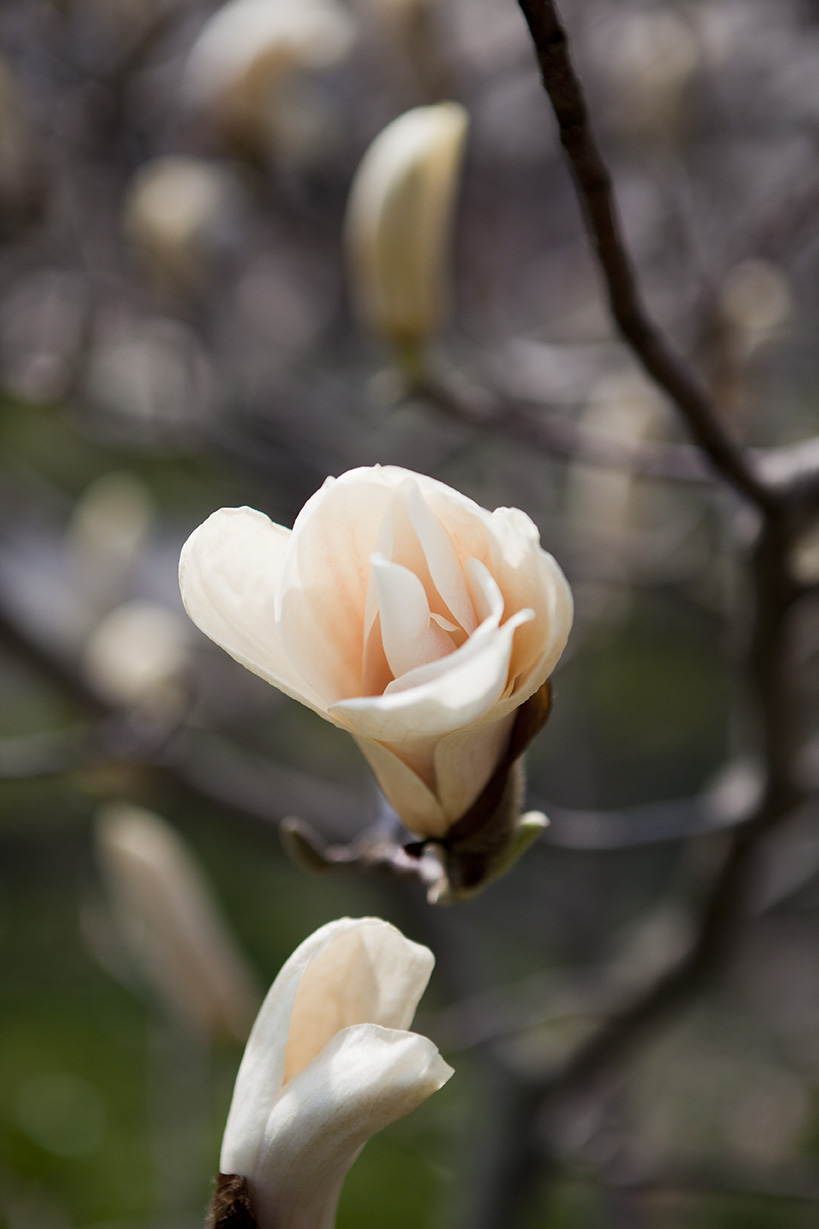
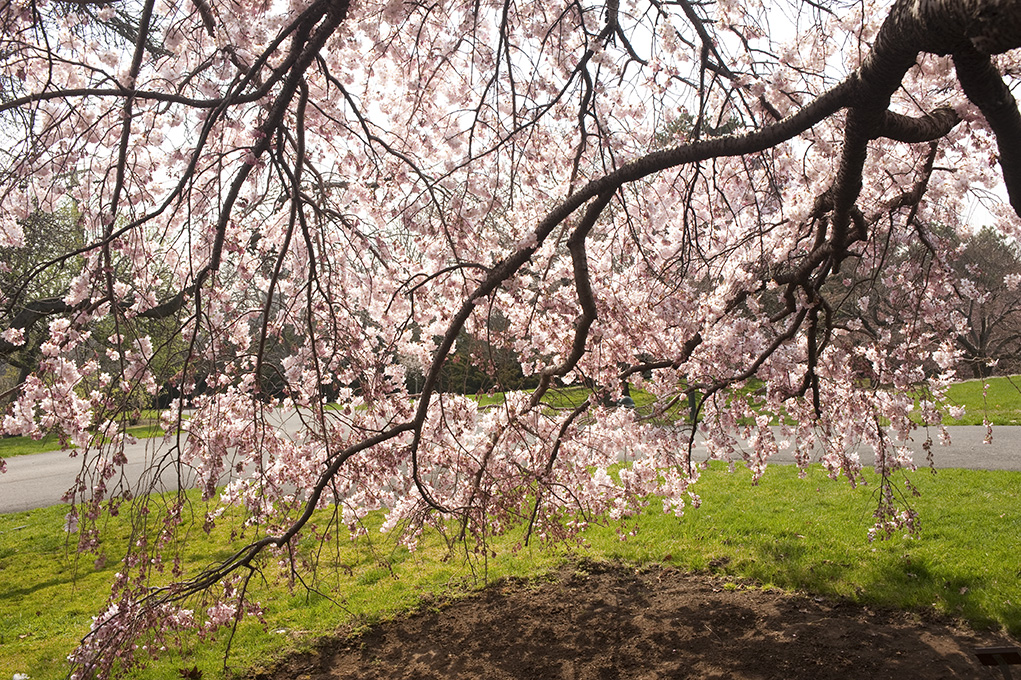
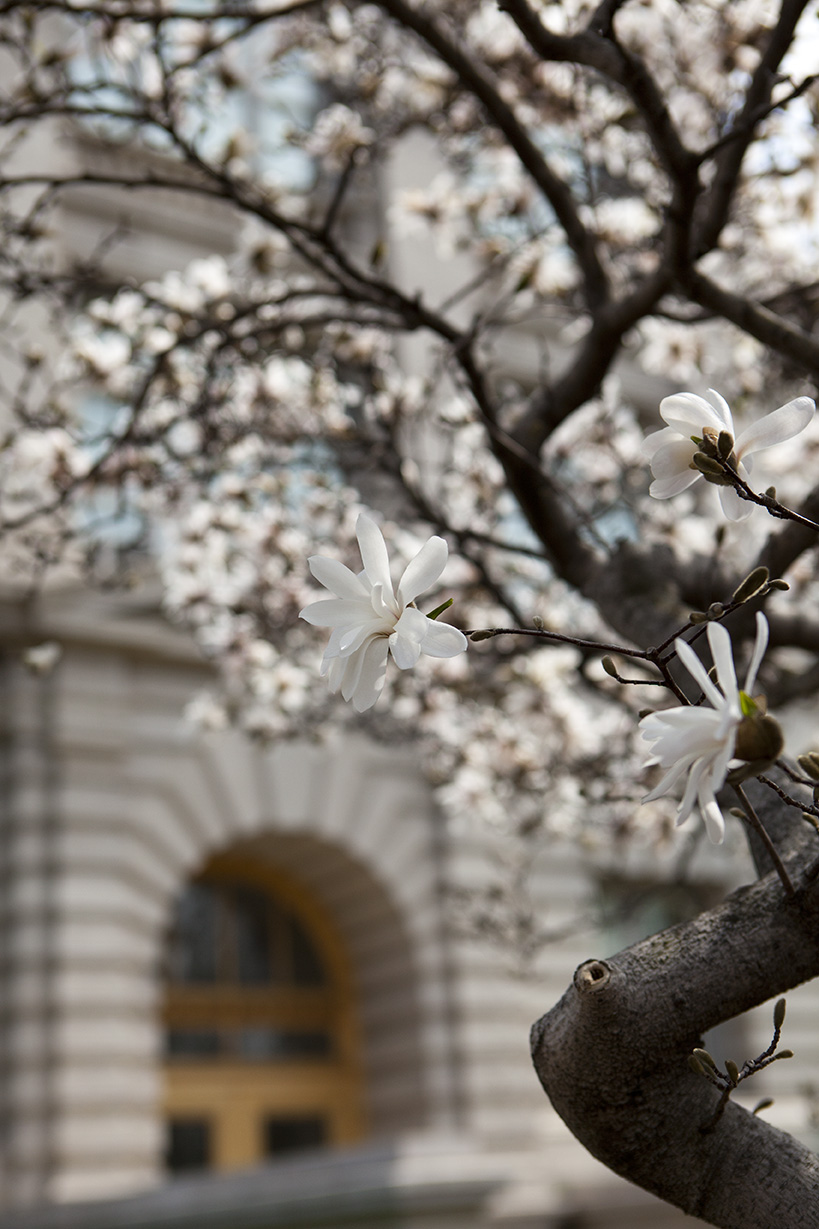
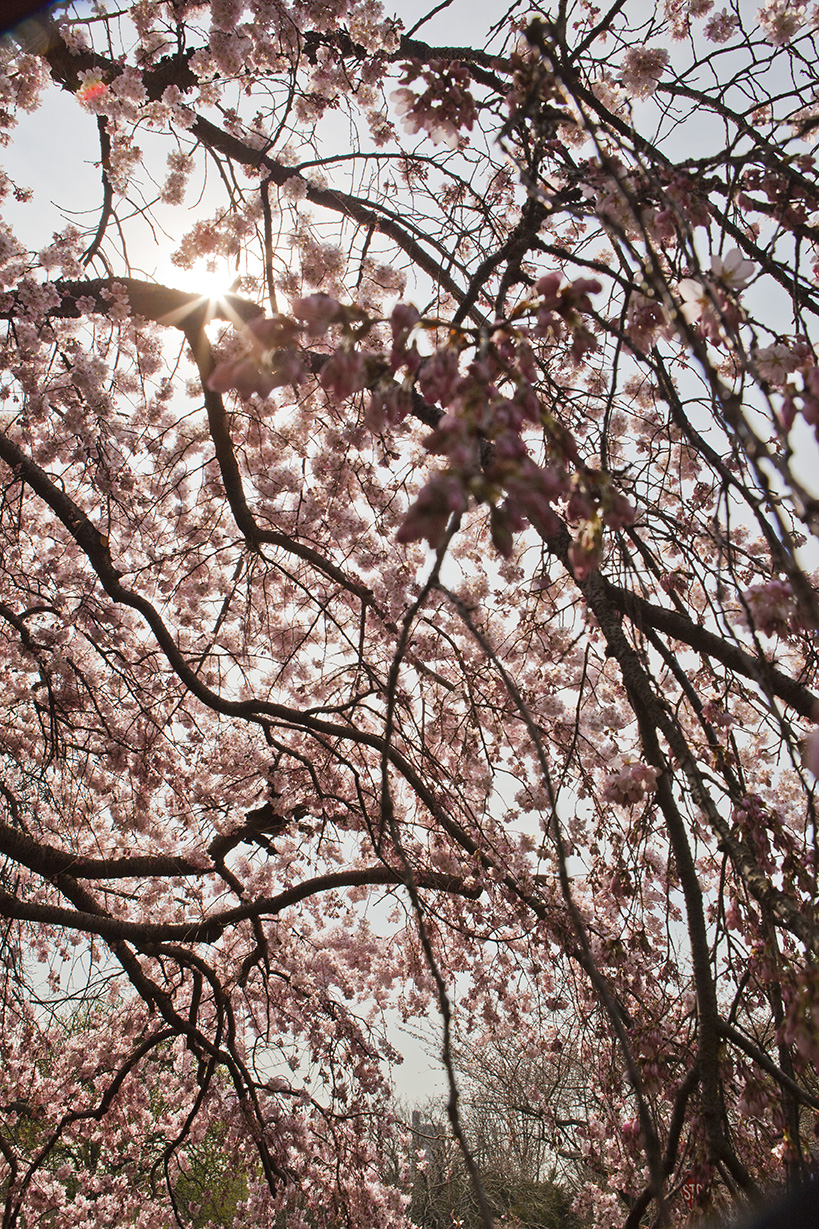
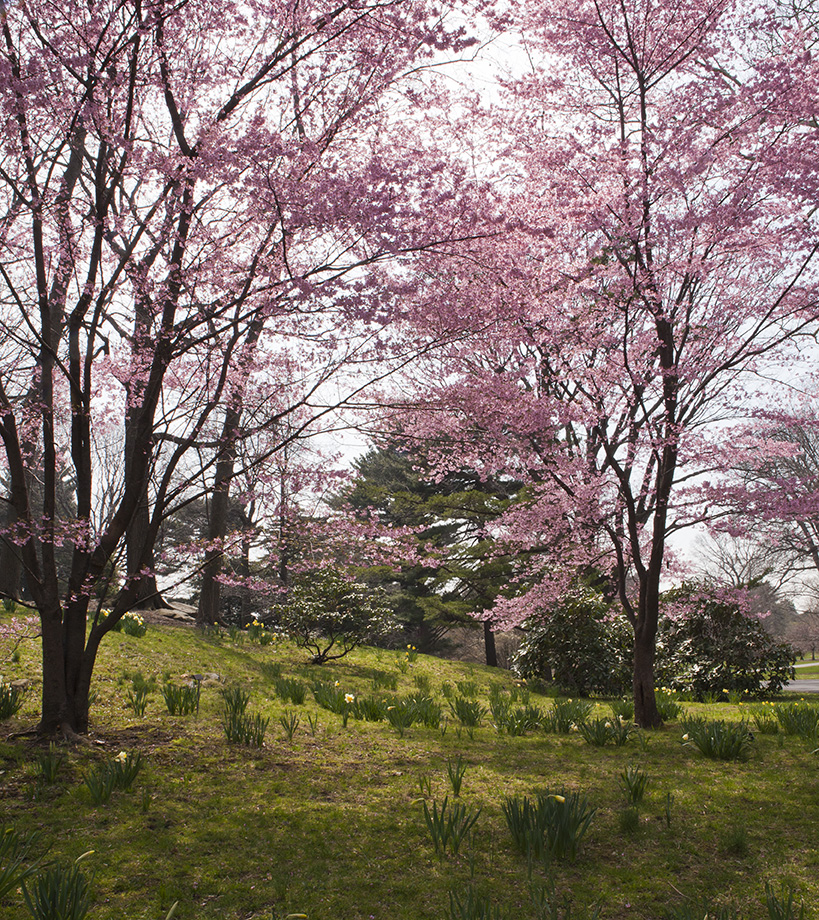
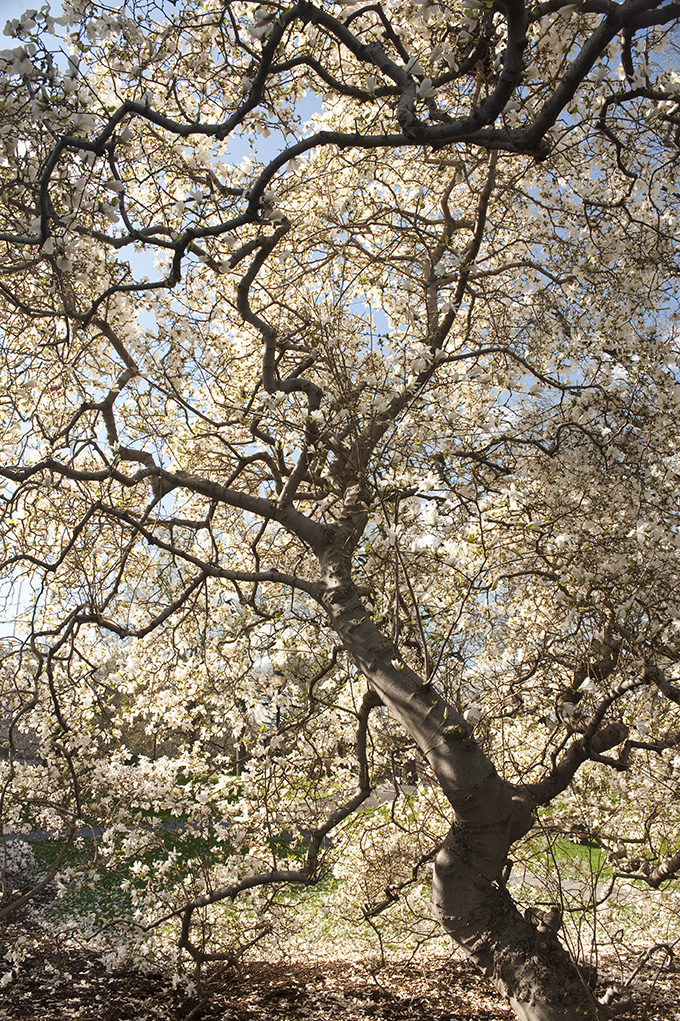
Photos by Ivo M. Vermeulen and Mark Pfeffer.
Posted in Photography on April 18 2011, by Ann Rafalko
Newton and Darwin wish you the very happiest of Bun … er, we mean, Mondays!
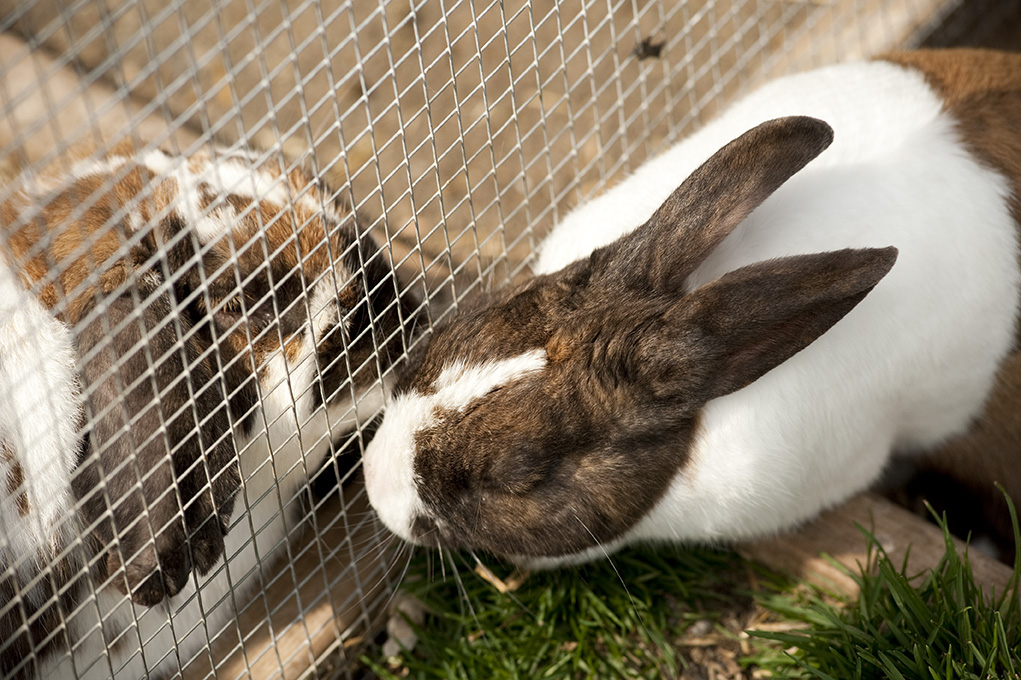
Photo by Ivo M. Vermeulen
Posted in Around the Garden, The Orchid Show on April 15 2011, by Ann Rafalko
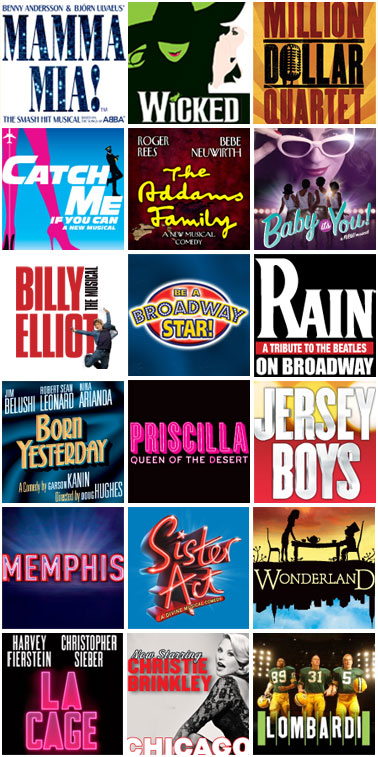 Just in time for Spring Break, the best of Broadway is making its way uptown to The New York Botanical Garden on Tuesday, April 19, 11 a.m. – 2 p.m.!
Just in time for Spring Break, the best of Broadway is making its way uptown to The New York Botanical Garden on Tuesday, April 19, 11 a.m. – 2 p.m.!
In honor of The Orchid Show: On Broadway, members of Broadway’s most popular shows have created unique interactive programming exclusively for the Garden!
Look for these participants and activities at the locations below in the Adventure Garden:
– Broadway Green Alliance – At the Entrance
Bring your plastic bags to help the Broadway Green Alliance keep plastic bags out of neighborhood trees (and out of landfills) and bring attention to this issue.
– Million Dollar Quartet – At the Stumps
Play Million Dollar Quartet’s version of pin the tail-on-the-donkey, “Pin the guitar on Elvis.”
– Billy Elliot – In the Plaza
The Ballet Girls from the cast of Billy Elliot conduct a ballet dance clinic where you can learn a portion of the number “Shine” from the production.
– Priscilla Queen of the Desert – Near the Waterfall
Priscilla Queen of the Desert will be doing diva-liscious flower and plant face painting.
– Catch Me If You Can – In Sun Central
Fly into the Catch Me if You Can booth to learn how to make the perfect origami airplane.
– RAIN: A Tribute to the Beatles – On Lifecycle Lane
Test your luck in the RAIN Strawberry Fields Memory game for the chance to win tickets to the show and other great
prizes
– The Addams Family – In Sun Central
It’s spooky good fun with The Addams Family’s eyeball toss.
– Baby It’s You – At the Stumps
Play “name that tune” to be entered into a drawing to win tickets to the show.
– Davenport Theatrical/Be A Broadway Star Board Game – Near Plant Part Paradise
Try your hand at this brand new board game.
– Lombardi – In Sun Central
Play the Football Toss to win great prizes.
– Wonderland!, Sister Act, and Memphis – Near the Waterfall
Enjoy coloring, friendship games and temporary tattoos.
– Broadway Partners – Near Boulders
Learn more about these exciting shows:
– Jersey Boys
– How To Succeed In Business Without Really Trying
– Wicked
– Born Yesterday
– La Cage Aux Folles
– Chicago
– Mamma Mia
Posted in Members on April 11 2011, by Sabrina Lee
| Sabrina Lee is an artist, community gardener, blogger, and NYBG Member. |
As a California native who was raised in the agricultural belt of that state, I never thought about food in terms of being local, seasonal, or sustainable. Local, in-season fruits and vegetables were always within reach; at roadside farm stands, and in my own backyard. Sustainable was another issue. My father cared for ten plus fruit trees in a backyard the size of ten parking spaces. Throughout my childhood, I plucked softball-sized oranges from our tree; I could not eat them faster than they fell. I later learned this was not a common childhood experience for most; I had no idea.
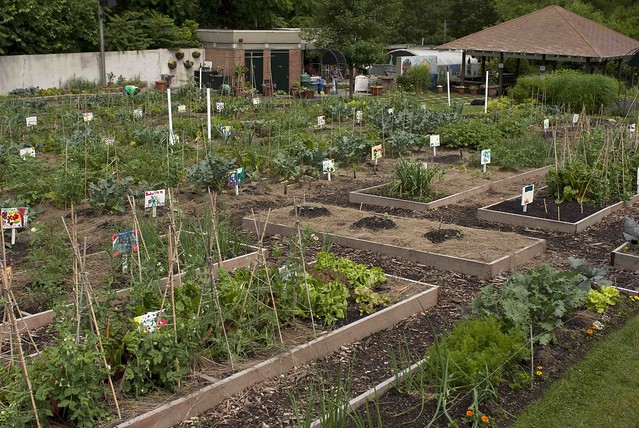
During my teaching days at a charter school here in New York City, I remember asking a student of mine casually, “What did you eat for breakfast?” She replied, “Chips and a soda.” She was in the seventh grade. This was not an uncommon answer among my students and that disturbed me. I do not believe it was a choice on their part to eat this way, but rather a matter of access. The school did not have any patches of green space (prior to leaving California, I had never heard the term, “green space”) designated for the students, and school lunches consisted mainly of processed foods. The closest businesses to the school were fast food establishments and a convenience store that sold products in the same category as my student’s breakfast. Like millions of other New Yorkers, my students did not have private or shared backyards, balconies, or terraces in their homes. Growing up in a city, this poses a very serious question for children, where will they learn about food?
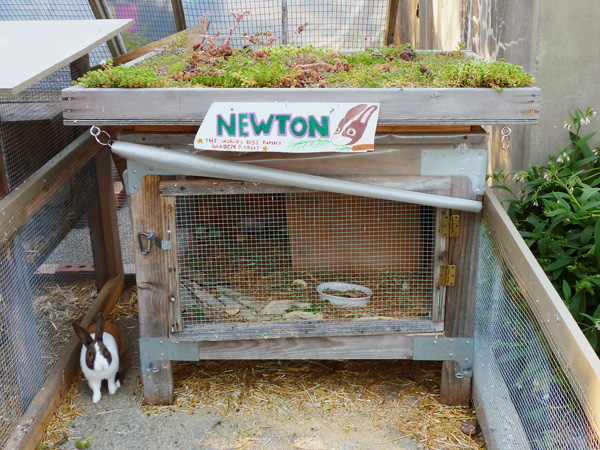
The New York Botanical Garden is an oasis within the concrete neighborhood where it resides. The Ruth Rea Howell Family Garden is an oasis within that oasis. When I first entered the Family Garden, I instantly felt the participatory nature of the space and the imprint of the individuals who have gardened there: in the composting bins, the hanging dried gourds, and the hand painted signs with the names of the vegetables and the names of the young gardeners. This adds to the communal feeling. Food education is paramount to one’s well-being and sets the stage for one’s relationship to food for a lifetime. City children need the opportunity to nurture and grow their own food, and they need to be aware of how their food is grown for them. When you cultivate and care for a garden, your appreciation for food is heightened. The physical labor becomes knowledge in your body. The Family Garden provides city children an opportunity to participate in the full cycle of growing food: sowing seeds, transplanting seedlings, maintaining a garden, harvesting the bounty, collecting seeds, and composting. Children not only gain knowledge and empowerment, but they also gain the sensory experience of working with their hands. It is a wonderful place to visit; I wish I were one of the two rabbits, Darwin and Newton that live there, preferably Newton, his hutch has a succulent rooftop.
Are you a NYBG Member or visitor who would like to share your experiences at the Garden like Sabrina? Consider writing a blog post for Plant Talk! Learn more.
Posted in Photography on April 9 2011, by Ann Rafalko
The new Native Plant Garden got a few new plants recently, to help keep this little oak tree company.
New Plants for the New Native Plants Garden (photo by Ivo M. Vermeulen)
Posted in Photography on April 7 2011, by Ann Rafalko
Curator Peter Kukielski teaches School of Professional Horticulture students in the Peggy Rockefeller Rose Garden.
(photo by Ivo M. Vermeulen)
Planting bare root roses in the Peggy Rockefeller Rose Garden (photo by Ivo M. Vermeulen)
Want to plant bare root roses yourself at home? Learn how from Peter himself! Hurry, because the best time for bare root rose planting is almost over in our area (for those of you who purchased a rose in a pot don’t worry — Peter says a potted rose can be planted anytime).
Posted in From the Library on March 30 2011, by Plant Talk

Of course, we’re not referring to the potholes you might encounter this spring on the Mosholu Parkway or the Cross Bronx Expressway. We’re a botanical and horticultural research library after all, far more interested in natural history, so when we say potholes we mean glacial potholes.
This enormous one was photographed in 1913. Originally it would have been twelve feet deep, four to five feet in width, tapered at the bottom. And its earliest published description might have come from Nathaniel Lord Britton, first Director-in-Chief of The New York Botanical Garden, in the proceedings of the New York Academy of Sciences.
Dr. Britton told a meeting of the Academy, on June 5, 1882, that the above as well as other potholes were “brought to my notice by the late Professor A. Wood. They are located on the western bank of the Bronx River, about midway between Bronxdale and Williamsbridge…near the western end of a now dismantled and impassable bridge, with stone abutments, and in the northern part of a hemlock grove which fringes the stream for about a mile below. It is one of the most picturesque spots in the vicinity of New York City, and a walk along the little river from Bronxdale to Williamsbridge is always enjoyable.”
Housed in the archives of The LuEsther T. Mertz Library, this historical photo also accompanied “Pot-holes in The New York Botanical Garden”—an article by paleobotanist Charles Arthur Hollick, in the September 1913 issue of the Journal of the New York Botanical Garden, page 157.
“Pot-holes are bowl- or basin-like depressions in rock,” Hollick wrote, “caused by the abrasive action of gravel or cobble stones when churned around in the depressions by rapidly moving water. A pot-hole has its beginning in an irregularity or inequality in the rock bed of a stream, in which gravel or perhaps a single cobble stone or other rock fragment finds logdment. If the conditions are favorable, so that the foreign material is free to move and the current of the stream is sufficiently rapid to churn or swirl it around, the original inequality in the stream bed becomes deeper and more or less circular in shape, from the abrasive action of its contents, and a pot-hole is formed. A pot-hole, therefore, no matter where it may be located, is definite evidence that the rock in which it was excavated must have been, at some time, a part of the bed of a rapidly flowing stream.”
Posted in Around the Garden on March 25 2011, by Plant Talk
| Ann Rafalko is Director of Online Content. |
Hello all! So I’ve heard from several sources that you guys are all just as excited as we are about the family of Great-Horned Owls that have just successfully hatched a nest of chicks for the first time since 2009! The owls are really amazing birds, and just one aspect of what makes the Garden such a special place.
That said, just like any new family, the owls need a little peace and quiet. I received this email today from Jessica Arcate-Schuler, Manager of the Forest where the owls are nesting:
Please advise all visitors to stay on Azalea Way while viewing the Great Horned Owls nesting at the edge of the Forest. First and foremost, this is to prevent any disturbance to the owls and owlets. Secondly, to help steward the Forest by not trampling newly planted restoration plants, salamanders, and causing soil compaction. Notify visitors that the nest and male owl, when he is on his normal perch, are both visible from Azalea Way and can be seen with binoculars.
With the excitement of the owlets hatching, more and more people seem to be traveling to view our owls (I met a birder from Boston, this week!). For the health and well-being of the owls and the Forest, we appreciate your help.
So, please come to the Garden to see the owls! Please bring binoculars, wear sturdy shoes, and bring your camera. But, please give a hoot, and do not disturb the owls. We’re working on something a little special that should hopefully let people who aren’t able to come visit get in on the owl excitement, so watch this space. Happy weekend everyone!
Posted in Members, Photography, Wildlife on March 21 2011, by Plant Talk
Remember this guy standing guard over his nest? Well, it turns out, he’s a father now! For the first time since 2009, The New York Botanical Garden‘s Native Forest is home to at least two baby Great-Horned Owl chicks! First word on the nest came to us from NYBG member, Plant Talk contributor, and amateur wildlife photographer Pat Gonzalez, who says she has confirmed the existence of the chicks with New York City bird expert Dr. Robert “Birding Bob” Candido.
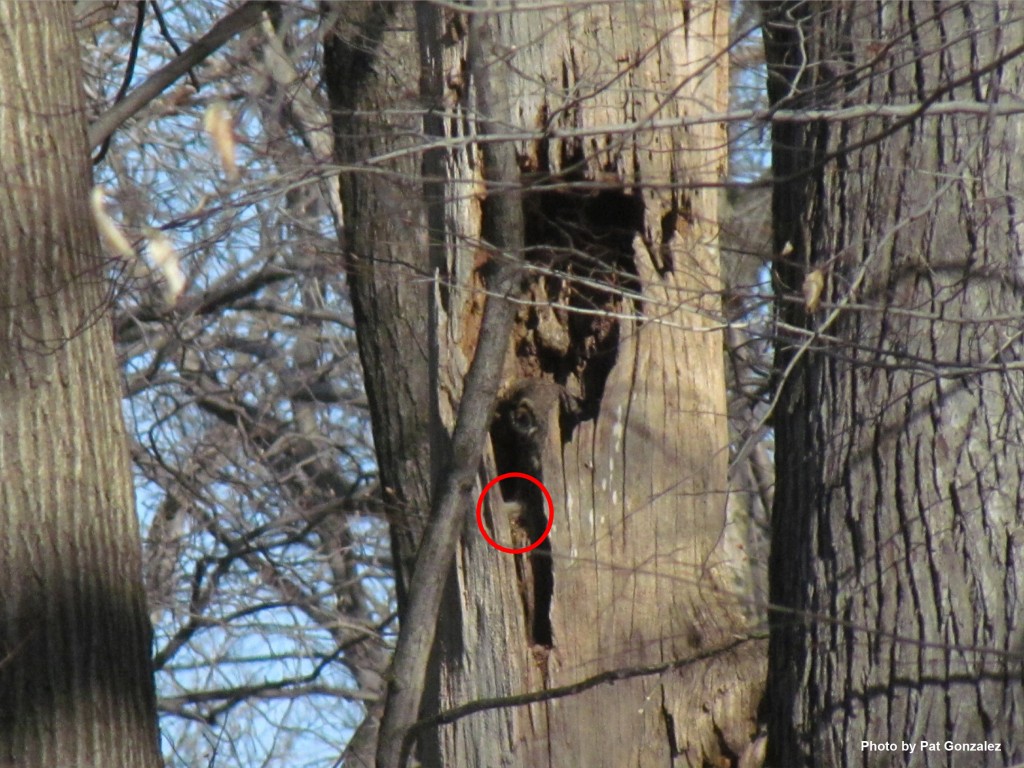
As Pat puts it, “Little white faces peeking out through the hole in that tree is a good thing” We couldn’t have said it better ourselves!
